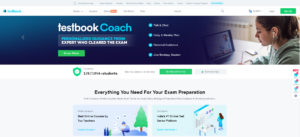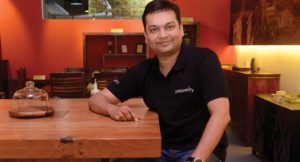Srikanth iyer, co-founder, homelane, shares how innovative marketing helped one of his earlier ventures – edurite – reach out to its target audience
S MEERA
 At The Startup50 Conference & Awards, held on August 28, 2015 at The Taj West End in Bengaluru, we decided to experiment with a new format for the talks by various entrepreneurs. In addition to the typical panel discussions, we invited leading entrepreneurs to deliver 20-minute, TED-style talks focused on a single topic. We specifically requested the speakers to stay away from sharing their entrepreneurial journeys, and instead focus on a key learning from their experiences so far.
At The Startup50 Conference & Awards, held on August 28, 2015 at The Taj West End in Bengaluru, we decided to experiment with a new format for the talks by various entrepreneurs. In addition to the typical panel discussions, we invited leading entrepreneurs to deliver 20-minute, TED-style talks focused on a single topic. We specifically requested the speakers to stay away from sharing their entrepreneurial journeys, and instead focus on a key learning from their experiences so far.
Srikanth Iyer was the opening speaker at the event, and what an impact he had. Iyer, of course, has been an entrepreneur and professional CEO for a long time now. Prior to starting up Homelane.com, he was CEO of Pearson India, a company he joined after TutorVista was acquired by the global education conglomerate. Iyer himself joined TutorVista, after his own startup Edurite was taken over by the company. In addition to spearheading HomeLane, Iyer also serves at impact-focused fund, Unitus Seed Fund, as a Venture Partner specializing in education.
In his 20-minute talk, Iyer focused on the topic, ‘Innovating on the go’, and how he realized the criticality of this in his earlier entrepreneurial avatar at Edurite.
The product development journey
In 2000, right in the middle of the dotcom boom, Iyer raised seed capital and started a venture called ed-tech.com. The portal was born with the vision of making quality education accessible to schools and colleges at various quality levels.
“Edurite’s journey was clearly a case of innovating on the go, especially the channel partnerships it established to develop the market.”
He was confident of being able to achieve his ambitious revenue goals considering the size of India’s K12 and higher education market. K-12 alone caters to 250 million children and additionally there are 150 million kids who don’t have the privilege of attending school. It was a significant market, and looked attractive from outside. “But, it was not simple,” he says now. On the other hand, there were great professors who had students lining up to join their tutorials. “We captured their classes on video, made a CD and put it in the market. We thought people will queue up,” he recalls. However, his assumptions were completely wrong. There were no queues. The professors were well-known in their localities but not beyond.
Moreover, their target market was a thin slice of the overall market. First, PC penetration wasn’t as high as it is today. Second, there was little inclination to learn on a computer. It needed evangelization.
The next challenge was in creating the product itself – which was video plus text. There are 33 different syllabi in India, and so we had to create a different product for each syllabus. The accent of the professors was also a limitation.
“So we moved away from video and opted for animations – 2D initially and then 3D. Like in object-oriented programming, the concepts were broken down and illustrated individually,” Iyer explains. Being modular, it was reusable. The accent used was also neutral so that it would get pan-India acceptance.
While all this may seem obvious today, it was a step-by-step evolution.
Bundling with OEMs
The next weakness was PC penetration, which was still low, and therefore the ability to get value from the product was still low. Despite, that, the market had high potential and the company patented the product.
To reach it to its target market at lower prices, it needed innovative marketing solutions. The primary purpose of buying a computer in our country is for educational purposes. Therefore, the company approached Intel and bundled educational content with computers, taking royalty on the sales. Iyer managed to sell 100,000 licenses, which gave it a head start.
The volume was good but not great. The company looked for the next step to boost sales.
Other Deals
Edurite approached educational book publishers and got a breakthrough with Frank Brothers in 2003. In the first two years, the company sold 400,000 copies. All it did was – a book without a CD would cost Rs. 100, and with a CD it would be Rs. 125. This small amount was nothing for buyers, who perceived value in buying the book with a CD.
As a next step, Edurite saw potential in partnering with a FMCG brand for a co-promotion campaign. It partners with Rin, the soap brand, on a co-promotion. “It worked well for them (Rin) and changed our fortunes as well,” says Iyer. The company clocked half a million sales in one month while Rin experienced a spike of 33 per cent as against the 5 per cent with other such campaigns.
Edurite’s journey was clearly a case of innovating on the go. Video was replaced by animation; a partnership with Intel was established for bundling education content with a new PC and a co-promotion with Rin soap was done to increase sales.
KEY TAKEWAYS
The right channel partnerships can transform your sales efforts
If you think you’re too early to the market, think ‘how do I develop the market?’



